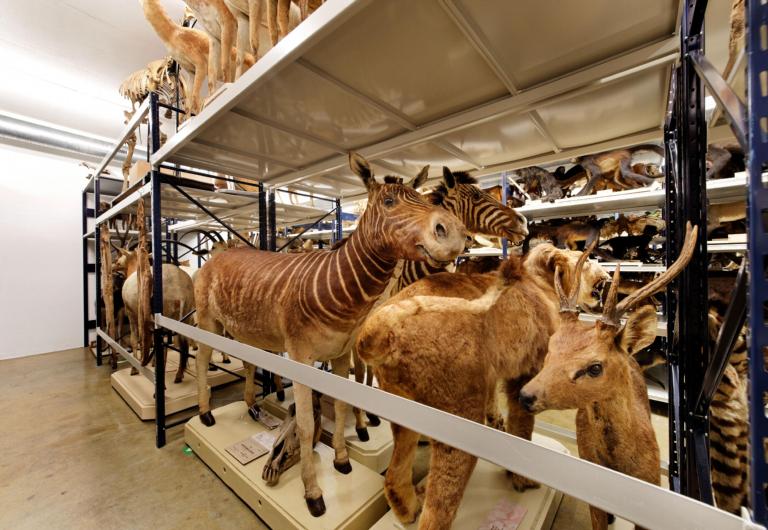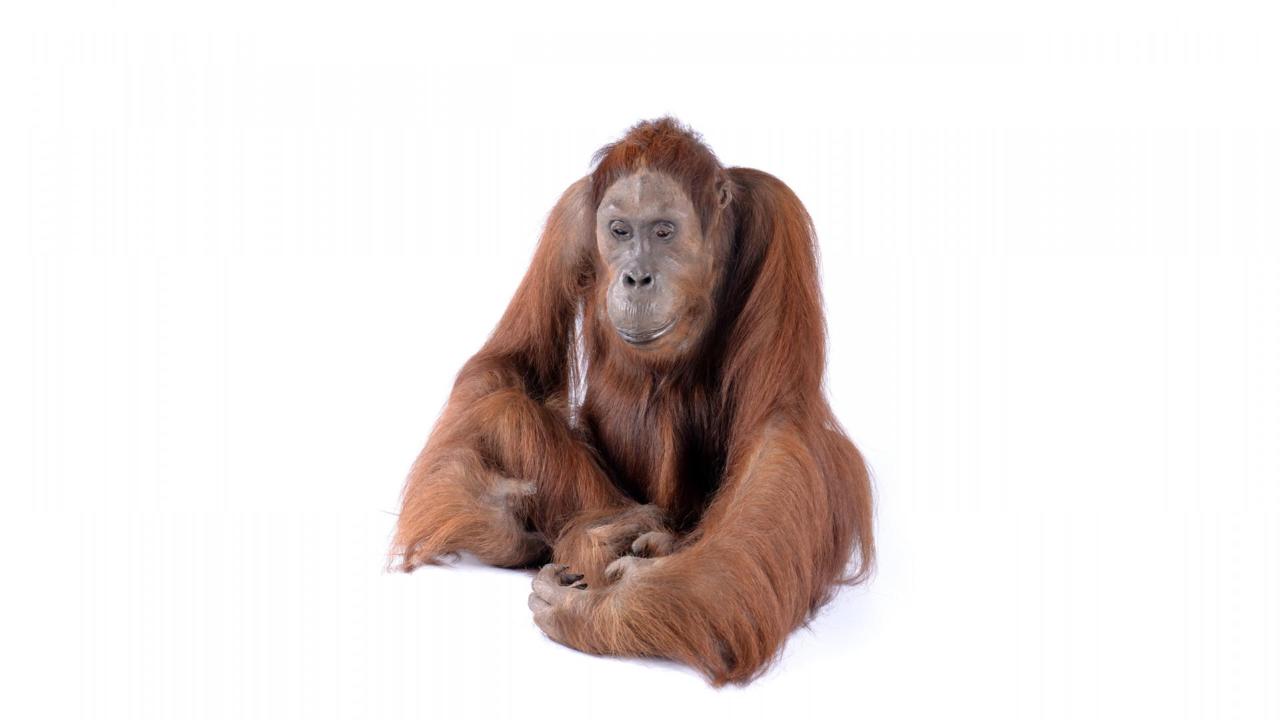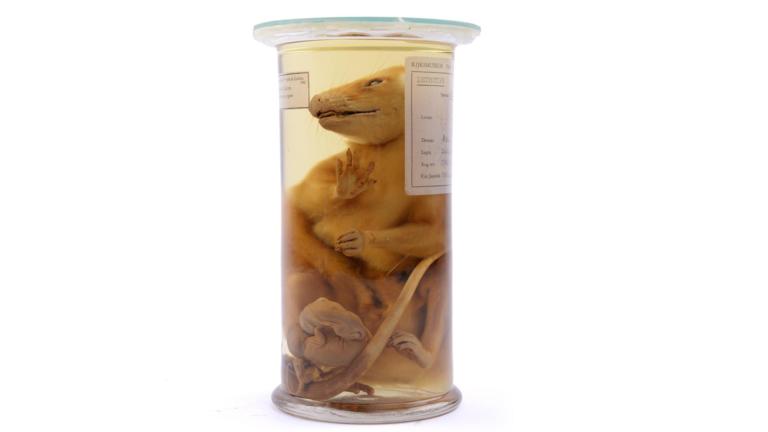
The mammal collection at Naturalis contains about 100,000 items and is still growing. Animals that are found dead are often included in the collection. Approximately 30 - 40% of globally known mammal species are represented. The collection is taxonomically organized. Most of the items come from the Netherlands and our former colonies: including Indonesia and Suriname. But in the past many items from all over the world were obtained for the collection through traders, many ungulates, for example, were collected in Africa by Van Horstok. The items in the mammal collection are preserved in several ways, including nests, bellows, loose bones, animals on alcohol, tissue samples, as well as stuffed skeletons and skins.
HighlightsFrom bat to primate
The mammal collection includes recently common species as well as recently extinct and rare species. The extinct Bluebuck, for example, is one of the few items still preserved in museum collections and is also the holotype of the species. The national mammalian fauna is well represented, and new Dutch mammals continue to be added to the collection. In addition to recently added items, items that have been preserved in the collection for over 200 years are also present. Many special species have been collected in Japan by Von Siebold and Burger. Most of these special species have also been used to describe new species. The Natuurkundige Commissie (Physics Committee) has also made major contributions to the collection from Southeast Asia, especially bats and primates. The collection of cetaceans also deserves to be mentioned.
Centerpieces
The mammal collection includes magnificent items set up by the famous Ter Meer family of taxidermists (working at Naturalis around 1900), such as an orangutan. The collection is widely consulted by researchers from all over the world, but is also of great value for our own exhibition and for those of other museums that sometimes borrow items. Absolute centerpieces are the gray four-eyed possum, the last Quagga, Bull Herman, the Cape Lion and the Tasmanian pouch wolf.


Whowork with this
Keypublications
- Van der Mije, Smeenk & Kamminga, 2025: Type specimens of recent mammals in Naturalis Biodiversity Center. Part 1 Monotremata, Didelphimorphia, Dasyuromorphia, Peramelemorphia, Diprotodontia, Afrosoricida, Macroscelidea, Hyracoidea, Proboscidea, Scandentia, Primates, Rodentia (Mammalia)
- Welker et al. 2016 Palaeoproteomic evidence identifies archaic hominins associated with the Châtelperronian at the Grotte du Renne. Proceedings of the National Academy of Sciences USA 113(40), 11162-11167. DOI: https://doi.org/10.1073/pnas.1605834113
- Ruedas 2017 A new species of cottontail rabbit (Lagomorpha: Leporidae: Sylvilagus) from Suriname, with comments on the taxonomy of allied taxa from northern South America. Journal of Mammalogy, Volume 98, Issue 4, 1 August 2017, Pages 1042–1059. DOI: https://doi.org/10.1093/jmammal/gyx048



